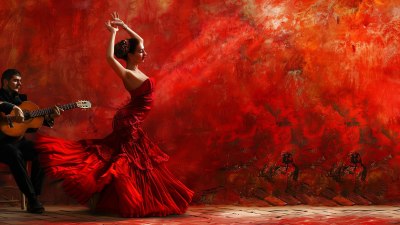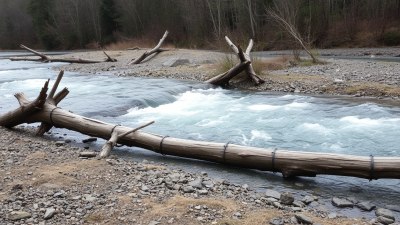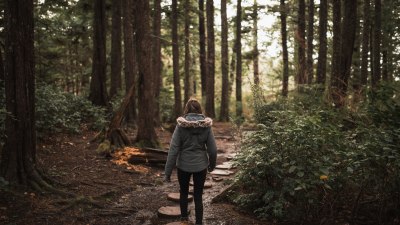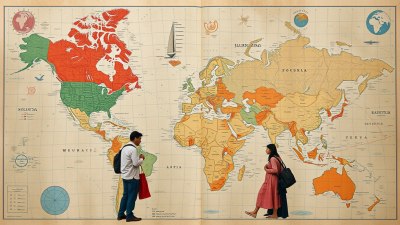Learning a Dance Move From Every Country You Visit
Explore diverse dance moves from around the world as you travel!

Traveling is one of the most enriching experiences a person can have, and one of the best ways to connect with the local culture is through its traditional dances. From the flamenco of Spain to the hula of Hawaii, every country boasts unique styles that tell stories, share history, and celebrate life. This article explores various dance moves from different corners of the globe, providing you with an impressive repertoire to showcase on your travels or at home.
1. Flamenco - Spain
Originating from the Andalusian region, flamenco is a passionate dance characterized by its intricate footwork and expressive arm movements. The dance is often accompanied by guitar music and singing, making it an evocative experience. To learn this dance, focus on clapping your hands in a rhythm while tapping your feet. As you get more comfortable, incorporate arm movements and spins to add flair.
2. Tango - Argentina
The tango is more than just a dance; it’s a cultural phenomenon that represents the soulful heart of Argentina. This partner dance emphasizes connection and improvisation. To get started, practice the basic steps: an eight-count sequence where you walk with your partner while maintaining close proximity. As you learn, experiment with how to lead or follow, adding style through sharp turns and fluid footwork.
3. Hula - Hawaii
The hula dance is a beautiful storytelling medium that showcases Hawaiian culture and traditions. Traditional hula movements emphasize hip movements and hand gestures that convey specific meanings. To learn hula, find a local class or follow online tutorials, focusing on rhythm and fluid motion. Incorporating traditional Hawaiian music will give you an authentic experience.
4. Kathak - India
Kathak is one of the major classical dances of India, characterized by intricate footwork and expressive gestures. It tells stories through narratives and involves a lot of spinning and rapid foot movements. Begin your Kathak journey by practicing basic footwork patterns called 'tatkar,' and incorporate hand movements for expressiveness. As you advance, explore storytelling through facial expressions.
5. Irish Dance - Ireland
Known for its rapid leg and foot movements while maintaining a stiff upper body, Irish dance has become globally popular through performances like 'Riverdance.' Start with the basic step known as 'the jig' where you learn to hop and shuffle your feet in sync with traditional Irish music. Practice with a partner to improve your coordination and timing.
6. Ballet - France
Ballet is a classical form of dance that originated in the Italian Renaissance courts but found its home in France. It emphasizes grace, technique, and discipline. Beginners should start with basic positions (like first, second, and fifth) and simple movements like pliés and tendus. Over time, you can incorporate more complex steps and develop strength and flexibility.
7. Salsa - Cuba
Salsa is a lively, energetic dance that is all about rhythm and connection. With roots in Cuban music, it combines Afro-Caribbean influences and Latin rhythms. To start, learn the basic salsa step: a three-step pattern that accentuates the rhythm, often performed in pairs. Practice leading and following techniques to create a smooth flow and enjoy the vibrant beats.
8. Kathakali - India
Kathakali is a classical Indian dance-drama known for its elaborate costumes and detailed facial expressions. This dance art form offers a vivid representation of classical Indian myths and stories. Start by practicing facial expressions, as they are crucial in this dance. You can learn to express different emotions through your face and body movements. The storytelling aspect makes it a fascinating challenge.
9. Bokwang - South Korea
The Bokwang dance represents traditional Korean culture, often performed during celebrations. The movements portray the harmony between humanity and nature. To engage with Bokwang, learn the basic postures and hand movements that reflect the beauty of nature. Practice with music to capture the spirit of Korean celebrations.
10. Cumbia - Colombia
Cumbia is a popular folkloric dance from Colombia, blending African, Indigenous, and Spanish influences. The footwork is fun and lively, often consisting of simple steps that progressively get faster. To learn cumbia, focus on the rhythm and enjoy the vibrant music, allowing your body to move naturally to the beat. Learning partner work will also enhance your dance experience.
11. Merengue - Dominican Republic
Merengue is a fast-paced, lively dance characterized by its one-two rhythm. It’s easy to learn, making it a favorite at parties. Start by mastering the basic step, which involves sliding your feet from side to side while incorporating hip movements. Practicing this dance with a partner will make it more enjoyable, allowing you to develop your style.
12. Balinese Dance - Indonesia
Balinese dance is deeply tied to spirituality and often symbolizes cultural expressions of local mythology. Learning Balinese dance requires patience, as it includes intricate arm movements and expressive facial features. Beginners can start with simple movements and gradually build up to more complex choreographies. The dance is often performed in vibrant costumes, emphasizing its cultural significance.
13. Kizomba - Angola
Kizomba is an Angolan dance that has swept across the globe, characterized by its smooth, flowing movements and close hold. This partner dance is about connection, so begin by practicing the basic step and how to lead and follow effectively. Kizomba emphasizes slow, deliberate movements, allowing you to enjoy the rhythm of the music and the connection with your partner.
14. Bollywoodesque - India
Bollywood dancing incorporates various styles and is characterized by energetic movements and expressive storytelling through dance. Begin with basic Bollywood steps and blend traditional Indian styles with modern moves. The high-energy nature of Bollywood allows for improvisation, adding personal flair as you dance.
15. Pantomime - UK
Pantomime is a theatrical entertainment form popular in the UK, which often includes dance as part of its storytelling. It encourages exaggerated movements and expressions. Start with simple gestures and expressions; as you gain confidence, learn choreography that accompanies popular stories or songs.
16. Zorba the Greek - Greece
The Zorba dance is lively and engages everyone in a joyful celebration. The dance involves a repetitive stamping foot pattern that allows for a range of personal expression. To learn this dance, join a local gathering and soak in the communal atmosphere, letting the music and rhythm lead your movements.
17. Bhangra - Punjab
Bhangra is a lively folk dance originating from the Punjab region, performed with exuberance and joy. The dance includes a mix of footwork and arm movements, often set to energetic music. Start with the basic steps and gradually learn how to incorporate jumps and hand claps, embracing the festive spirit of this energetic dance.
18. Taiko - Japan
Taiko is a form of traditional Japanese drumming that often includes dance. It focuses on rhythm and movement, using the entire body to connect with the beat. To learn about Taiko, start practicing rhythms with hand and body movements before diving into learning drumming techniques.
19. Line Dance - USA
Line dancing is a form of dance where people dance in lines, performing the same sequence of steps. It ranges from country to pop music styles. Begin with simple country line dances, focusing on keeping in sync with the group. As you gain confidence, try different genres and incorporate your creativity.
20. Samba - Brazil
Samba is synonymous with Brazilian culture and known for its rhythm. It’s a festive, vibrant dance often featured in carnivals. Get started by practicing the basic samba step, where you alternate feet in a quick, bounce-like motion. Joining a local samba class will allow you to experience the culture fully, as you learn the communal spirit of this captivating dance.
By learning a dance move from each country you visit, you deepen your understanding of its culture and forge connections with locals. Dance transcends language barriers, offering a unique way to express yourself and create memories that last a lifetime. Whether you're twirling in a Spanish flamenco or swaying to the beat of a Brazilian samba, each dance move you learn becomes a piece of the tapestry of your travel experiences.











